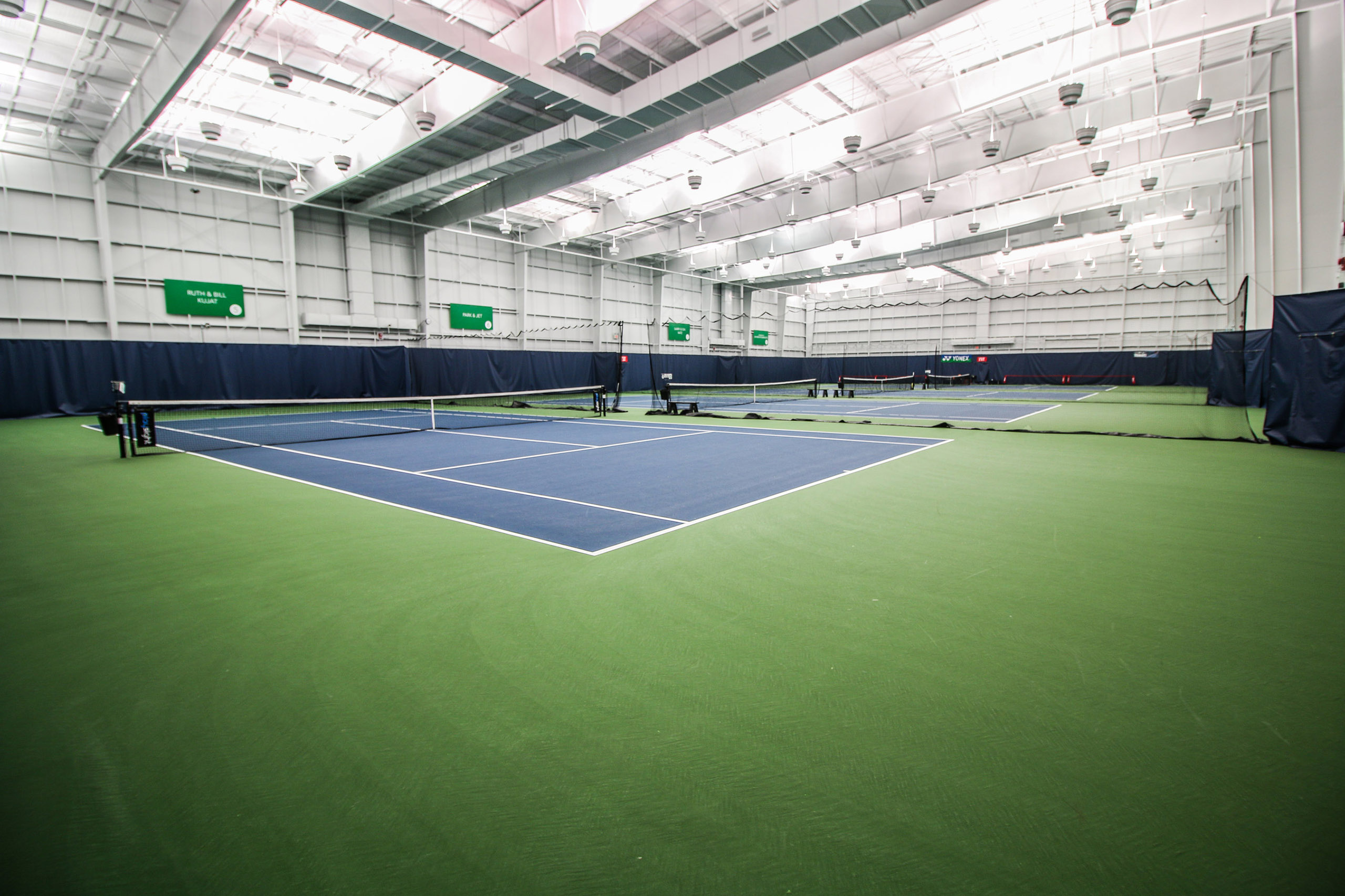Practicing solo against a brick wall to perfect your form can be fun, not to mention beneficial to your game, but there’s nothing quite like grabbing a friend or three for a singles or doubles match on a proper tennis court.
- The surface: Court surfaces can vary – for instance, Wimbledon is played on grass, the French Open is played on clay, and the National Bank Open presented by Rogers is played on hard courts. The lines of the court are always the same, though, and in Canada, hard courts are most common.
- The lines: A symmetrical rectangle, a tennis court has two baselines, four service courts (the two spaces in front of each side of the net where a successful serve must land) and two sidelines. For a singles match (two people), you will use the inner sideline as a boundary line and for a doubles match (four people), you will use the outer sideline as a boundary line. Simply, if the ball bounces outside the baselines or sidelines, or outside the service courts during a serve, consider it out of play.
- The net: Every court has one and it’s usually about 3.5 feet high at the posts and 3 feet high in the middle. Try not to touch it with your racquet and always be sure to walk up to it when you’re finished playing to shake your opponents’ hand and say, “good match” or “well played”.
- Court placement: After a few days of hitting the ball back and forth, you’ll start to notice you have the ability to place the ball. If you hit the ball diagonally from one corner of the court to the other, you can pat yourself on the back for a fine “crosscourt” shot. In the case that you hit the ball and it goes down the sideline of the same side you hit the ball from, you can pat yourself on the back again, this time for a fine shot “down the line,” the harder of the two shots.
- The court beside you: More often than not there is going to be a court beside you. One of the number one rules in tennis is to be courteous. If you have a question, comment, concern, or one of your neighbouring courts’ tennis balls, wait until they have completed playing their point to initiate contact.
